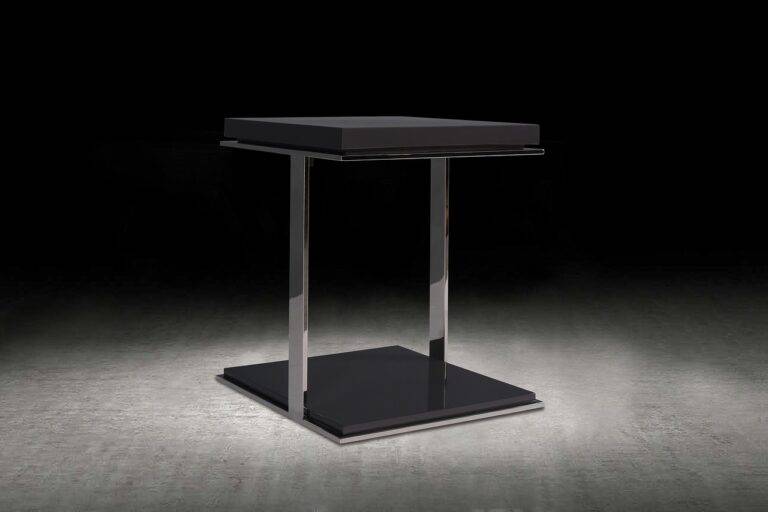Mindful Home Decluttering: Simplifying Spaces for Clarity and Peace of Mind
Begin by taking a walk through each room of your home with a fresh perspective. Look for surfaces cluttered with items that don’t belong or are rarely used. Pay attention to drawers, closets, and cabinets filled with things that no longer serve a purpose in your daily life.
Next, consider high-traffic areas where clutter tends to accumulate, such as entryways, kitchen countertops, and living room coffee tables. Notice if there are items that seem out of place or create visual chaos. By actively pinpointing these trouble spots, you can effectively target areas in need of decluttering to restore a sense of peace and order to your living space.
Understanding the impact of clutter on mental health
The presence of clutter in your living space can have a significant impact on your mental health. A cluttered environment can lead to feelings of overwhelm, stress, and anxiety. The visual stimuli of disorganization can make it harder for your brain to focus and can create a constant distraction that hinders your productivity and sense of calm.
Furthermore, clutter can also evoke feelings of guilt, shame, and embarrassment, as it may symbolize a lack of control or an inability to keep things in order. This can lead to a negative self-perception and a sense of inadequacy. Over time, living in a cluttered space can contribute to a cycle of negative emotions and thoughts, affecting your overall well-being.
Setting realistic decluttering goals
When setting realistic decluttering goals, it’s essential to start by assessing the scope of the clutter in your home. Consider the areas that are causing the most stress or are in need of the most attention. By prioritizing these spaces, you can focus your efforts and make the decluttering process more manageable.
It’s important to set specific and achievable goals that align with your lifestyle and schedule. Rather than aiming to declutter your entire house in one day, break the task down into smaller, more manageable segments. For example, you could set a goal to declutter one room a week or tackle a specific category of items each day. This approach not only makes the process more achievable but also allows you to track your progress and stay motivated along the way.
Creating a decluttering plan and schedule
Once you have identified the areas of clutter in your home, the next step is to create a detailed decluttering plan and schedule. This will help you stay organized and focused throughout the decluttering process. Start by breaking down the decluttering tasks into smaller, manageable steps that can be completed within a specific timeframe. Consider setting aside dedicated blocks of time each day or week to tackle different areas of your home.
Prioritize the areas that require the most attention and set realistic goals for each decluttering session. Be mindful of your energy levels and avoid overloading yourself with too many tasks at once. It can be helpful to create a visual timeline or checklist to track your progress and keep yourself motivated. Remember, decluttering is a gradual process, so be patient with yourself and celebrate small victories along the way.
Sorting items into keep, donate, and discard categories
When it comes to decluttering your home, one of the key steps is sorting items into categories: keep, donate, and discard. This process can help you make clear decisions about what belongings you truly need and what you can let go of. Start by assessing each item individually, considering its usefulness, sentimental value, and condition.
For items you decide to keep, find a designated spot for them where they can be easily accessed and stored neatly. This will help you maintain a sense of organization in your living space. Items you choose to donate can be given to those in need or to charity shops, allowing them to serve a new purpose for someone else. Discarding items that are broken, damaged, or no longer usable is essential to free up space and create a clutter-free environment in your home.
Organizing storage solutions for a clutter-free home
One effective storage solution for maintaining a clutter-free home is utilizing shelving units to maximize vertical space. Shelving provides ample room for items to be neatly displayed or stored, helping to keep surfaces clear and organized. By categorizing and arranging belongings on shelves, you can easily locate items when needed and prevent clutter from accumulating on floors or countertops.
Another storage solution to consider is using storage bins or containers to store and categorize smaller items. Clear bins are particularly useful as they allow you to see the contents without having to open each container. Labeling the bins with the contents inside can further streamline organization and make it simpler to find specific items. Incorporating storage bins into closets, cabinets, or under-bed storage areas can significantly reduce visual clutter and create a more streamlined and functional living space.
Implementing daily habits to prevent future clutter
To prevent future clutter from accumulating in your home, it is essential to establish daily habits that promote organization and tidiness. One effective habit is to designate a specific time each day to tidy up and put things back in their designated places. By incorporating this routine into your daily schedule, you can prevent items from piling up and creating clutter.
Additionally, practicing the “one in, one out” rule can help maintain a clutter-free environment. This rule involves getting rid of an old item every time you bring a new one into your home. By consciously evaluating your belongings and eliminating unnecessary items on a regular basis, you can prevent excess clutter from building up in your living spaces.
Utilizing mindfulness techniques during the decluttering process
Mindfulness can be a valuable tool in the decluttering process, helping you stay present and focused as you tackle each area of your home. By practicing mindfulness, you can observe your thoughts and emotions without judgment, allowing you to make decisions about what to keep and what to let go of with a clearer mind. Take deep breaths and center yourself before starting each decluttering session, anchoring yourself in the present moment to avoid becoming overwhelmed by the task at hand.
As you sort through your belongings, try to stay mindful of the purpose each item serves in your life. Ask yourself if it brings you joy, serves a practical use, or holds sentimental value. Let go of items that no longer serve a purpose or bring positivity into your living space. Mindfulness can also help you appreciate the process of decluttering, allowing you to savor the progress you make and the benefits of creating a more organized and peaceful home environment.
Seeking support from friends or family members
Decluttering can feel overwhelming at times, especially if you’ve accumulated a significant amount of items over the years. In such cases, involving friends or family members can provide the extra motivation and support needed to stay on track. Having a helping hand not only makes the process more manageable but also ensures that you have someone to share the journey with.
Your loved ones can offer a fresh perspective on your belongings and help you make objective decisions about what to keep, donate, or discard. Their presence can also make decluttering sessions more enjoyable and less solitary. Remember, decluttering is not just about tidying up your physical space but also about improving your mental well-being, and having the encouragement and assistance of those close to you can make a significant difference in achieving your goals.
Celebrating your decluttering achievements and embracing a minimalist lifestyle
Once you’ve tackled the clutter in your home and successfully decluttered your living space, it’s important to take a moment to celebrate your achievements. Embracing a minimalist lifestyle not only brings a sense of accomplishment but also allows for a more serene and organized living environment. By recognizing the hard work you’ve put into decluttering and simplifying your surroundings, you can pave the way for a more peaceful and harmonious life.
As you celebrate your decluttering achievements, it’s essential to reflect on the positive impact that minimalism can have on your mental well-being. By letting go of excess possessions and focusing on the things that truly bring you joy and serve a purpose, you are creating space for clarity and mindfulness in your daily life. Embracing a minimalist lifestyle is not just about the physical act of decluttering; it’s a mindset shift towards prioritizing what truly matters and finding contentment in simplicity.
How do I know where to start decluttering in my home?
Start by identifying areas of your home that are causing you stress or feel cluttered. This could be a specific room, closet, or even just a corner that needs attention.
What are some benefits of decluttering for mental health?
Decluttering can help reduce feelings of overwhelm, anxiety, and stress. It can also create a sense of calm and clarity in your living space.
How can I set realistic decluttering goals?
Start by breaking down your decluttering tasks into smaller, manageable goals. Set a timeline for each goal and be realistic about the time and effort it will take.
What is the best way to organize storage solutions for a clutter-free home?
Utilize storage containers, shelves, and bins to keep your belongings organized and easily accessible. Consider using labels to help you stay organized.
How can I prevent future clutter from accumulating in my home?
Implement daily habits such as cleaning up after yourself, putting things back in their designated place, and regularly decluttering and organizing your belongings.
How can mindfulness techniques help during the decluttering process?
Mindfulness can help you stay present and focused on the task at hand, allowing you to make intentional decisions about what to keep and what to discard.
How can I celebrate my decluttering achievements?
Celebrate by acknowledging your hard work and progress, treating yourself to a reward, or sharing your achievements with friends and family. Embrace the minimalist lifestyle you have created for yourself.







